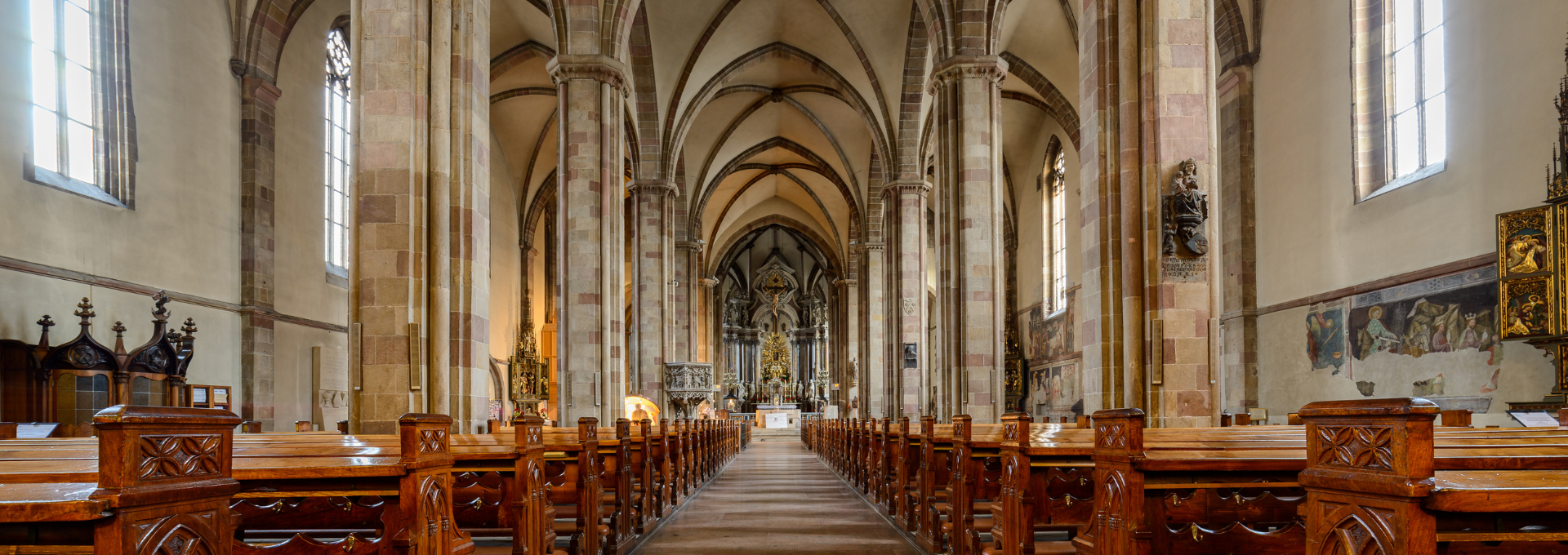The symbol of the South Tyrolean capital of Bolzano is the Cathedral of the Assumption of Mary. A meeting house, a so-called domus, already stood on its site in early Christian times, which was then expanded into a basilica in the 5th and 6th centuries. After Bolzano’s economic and cultural rise to become a trading city of supra-regional importance, a new church was to be built as a symbol of faith as well as a sign of the power of the rising bourgeoisie.
In 1184, construction was begun under the direction of Lombard master builders and completed in 1222. But only 100 years later, the Romanesque building was considered unfashionable and plans began to be made for a new, Gothic church. Reddish (Bolzano) and yellowish (Lower Lombardy) sandstone was used for the new building, windows and gates were designed in the new style, as were the impressive gargoyles.
It took until 1517 until the 65m high bell tower with its characteristic openwork and filigree spire was finally completed.
The interior of the Bolzano Cathedral captivates with its simple elegance. The showpiece is certainly the magnificent pulpit and the fresco “Madonna and Child” in the vestibule, which is said to be by Michael Pacher. Unfortunately, the cathedral was badly damaged by Allied bombing during the Second World War and little of the fresco decoration inside the church has survived. In the course of reconstruction after 1945, among other things, the remains of the early Christian church were discovered.
Now a new chapter in the history of the cathedral is being written. Because in order to be impressed by the beauty of Bolzano’s landmark, it is no longer absolutely necessary to be on site in South Tyrol.
Experience a virtual 3D tour of the cathedral and the cathedral treasury.
We are aware that such a 3D tour cannot replace a personal visit. But it is nice that it is now possible to get an impression of Bolzano Cathedral from anywhere in the world. Take a look around too.


